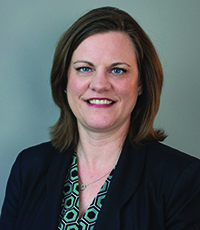YOUNGSTOWN, Ohio – Credit cards are one of the most enduring vehicles of consumer spending. Endorsed by celebrities and offering a range of promotions and rewards, they provide a flexibility in using your money the way you need it.
Across all the various programs, rewards and rates, there’s usually a reason banks offer their own credit cards: It keeps customers in-house.
“We handle everything from savings accounts to money market accounts to checking accounts to debit cards to mortgages to simple secured loans. It’s just another service to our members so they can do all their one-stop shopping with us,” says Mark Dickey, consumer loan manager and Mastercard program manager at Associated School Employees Credit Union. “They don’t have to have a savings account at one place and a checking account somewhere else and then a Capital One credit card, an institution they have no other affiliation with.”

The credit union, based in Austintown, offers two versions of its Mastercard: the Classic with an 11.99% fixed rate and the Gold card with a 9.99% fixed rate. Through its partnership with Mastercard, ASECU handles all applications for cards and determines a member’s eligibility while the credit card company deals with statements and the cards themselves.
“They don’t have to deal with a 1-800 number. They may call Mastercard, which has a program called EZCard to do things online,” Dickey says. “But they also can come in and see myself or other loan officers if they have questions or concerns or want to change anything.”
It’s a similar situation at 717 Credit Union, says consumer lending manager Vicki Paisley. The credit union handles nearly all of its customer services at its headquarters in Warren, including processing credit card disputes and potential fraud.
“We’re local. We’re here. You can easily make your payment on our website, on our app, at a branch. If there’s a problem, you’re not calling a call center,” she says. “It’s all handled from our offices on Larchmont Avenue.”
717 offers a Platinum Rewards card through Visa with a variable rate, although “compared to the national market, it’s much lower than what you’d find at the Capital Ones,” she says. Currently, the best rate the credit union offers is 10.99%. Because the interest rate on credit cards is tied to the Fed prime rate, that number hasn’t fluctuated much recently.
“I’d bet that a lot of customers think they actually have a fixed rate. It’s not been moving,” Paisley says. “[Our credit card rate is] calculated from a combination of prime and our margins. Since prime is at 3.25%, it’s been a while since we’ve updated our rates.”

For those with a credit card through Premier Bank, the rates are set by a third-party processor, Alon, usually between 13% and 24%, says Jason Gendics, vice president and director of retail and business banking. Premier offers a wide array of options for its credit cards, he says, “depending on customer needs and what they’re looking for in a credit card offering.
“If you’re looking to transfer balances, we have our Platinum card that saves on transferring higher-interest balances. We have cash back cards. We have a rewards card. We have a student card. We have a secured card for someone who’s trying to build up their credit,” he continues.
Over the past year, the bankers say, how customers of their respective financial institutions used credit cards shifted, with the amount of debt carried on credit cards falling as spending declined early in the pandemic.
“What we saw and what the industry saw is credit card debt levels going down. They stabilized around the end of the second quarter, start of the third quarter and then started to go back up,” Gendics says.
A May report released by the Federal Reserve of St. Louis shows that total credit card debt in the United States had dropped 13% to a collective $807 billion at the end of the third quarter. In the second quarter, rate of debt creation on bank card accounts – a group that includes credit cards – was 8%, the lowest rate since the Fed began tracking quarterly figures at the start of 2004. At the same time, debt elimination rose to 15% in the second quarter of 2020, the highest level since the beginning of data tracking.
For financial institutions, credit cards are a way to make money, typically through interest earned on outstanding balances and interchange fees. Because credit cards function as an open-ended, unsecured loan, 717’s Paisley explains, their rates tend to be higher than other loan products.

“The rates are going to be higher than something like a car loan. Our best credit card rate is 10.99% whereas our best auto rate is 3.24%,” she says. “So it’s a higher-earning product.”
Interchange fees, meanwhile, are collected by the financial institution, credit card companies like Mastercard and Visa, and payment processors on transactions made with a credit card.
Fees vary depending on a wide range of factors, including the sector where the card is used and whether a debit or credit card is used in the purchase, with credit cards taking a higher fee. The industry average for credit cards is around 2% of the total transaction and split among all organizations collecting the fee.
Those fees, determined by Merchant Category Code, also provide institutions an insight into how clients use their cards.
“Groceries, home improvement, eating out, fuel and Amazon are the top five interchange codes our members are using,” Paisley says of 717’s top codes for 2020. “Looking at the lists from 2019, Amazon wasn’t that high, certainly not in the top three. Groceries are usually the top source.”
That insight can also help bankers to provide one of the major benefits of credit cards: flexibility. Being able to use credit cards when and how they’re needed is often what draws customers in, the bankers say.
“Many times when people hear ‘credit card,’ they think it’s bad and often another way of getting into debt. The flexibility and protection a credit card can give – it allows them to budget appropriately. There are online options for making payments and with our budgeting tools. It can help save money,” Premier’s Gendics says. “They can see how they’re spending money and adjust accordingly. It’s not always about creating debt. It’s about creating flexibility in their budget.”
